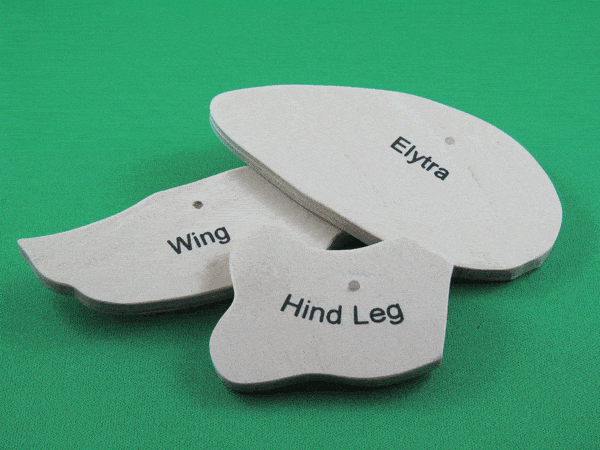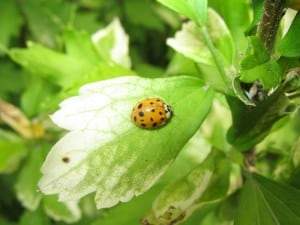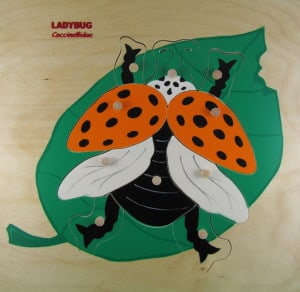You may be surprised to know that ladybugs come in a wide variety of colors and numbers of spots. The ubiquitous red ladybug is most often seen in the garden and in backyards but it has also morphed into company logos, children’s clothing and décor motifs, toys, and the like making it the most recognizable and memorable of the variants.
Did you know there are over 300 types of ladybugs in North America alone? The most common species have 2, 7, 9 or 13 spots, but some have none! The base coloration can vary from red, to yellow, orange, grey, black, brown and even pink. The spots can also be either black, white, yellow or red depending on the base color. The base color and spots appear on the hard wing covers, the Elytra (ee-li-truh), which protect the fragile transparent wings used for flying. The Elytra is one of the body parts named on the back side of my ladybug nomenclature puzzles.
Most ladybugs hibernate over the winter and although some do die in cold weather, enough survive to the spring to start the next generation. Some species are hardier than others. You may see more of the red body colored ones in the spring, having survived the winter, and more of the black bodied ones later in the summer and fall, as they tend to propagate faster than the red ones and so can “catch up” in numbers. Most ladybugs live up to one year.
Like many symbols and indicators in nature, the spots on a ladybug are highly visible for a reason. They are definitely not for camouflage. The spots are easily seen from a distance to warn potential predators that ladybugs taste awful and are to be avoided. In fact, if you startle a ladybug or it senses fear, it will release a yellowish fluid from its leg joints that smells bad and tastes bitter (if you were a predator about to stick one in your mouth that is….). The fluid is not harmful to humans . So if you see some yellow droplets on the ladybug that is crawling around on your hand, you’ll know the ladybug is not injured nor sick…just scared.
Keep a sharp lookout for the variant cousins of the common red ladybug. Maybe the small beetle you see with the black base color and yellow spots is actually a ladybug. Take a closer look. Check out my Pinterest board devoted to pictures of different ladybugs – they’re pretty cool!
I was so fascinated by the variations in ladybugs that I discovered years ago in a book I was reading to my daughter. The pictures of those ladybugs have stayed in my memory all these years. In fact I think we still have that book because I couldn’t part with it! It was so inspiring, that the images bubbled to the surface again when I made my Red Ladybug nomenclature puzzle. This is why I decided to make a second Yellow Ladybug nomenclature puzzle to add to my product line, as a way to urge teachers, parents and children to look beyond the red and search out the other cousins. This yellow ladybug was caught on camera on one of my shrubs and was the model for my puzzle.
Go on a bug hunt and see what you can find. Post your comments back on what you find. Good luck! I look forward to hearing from you!






